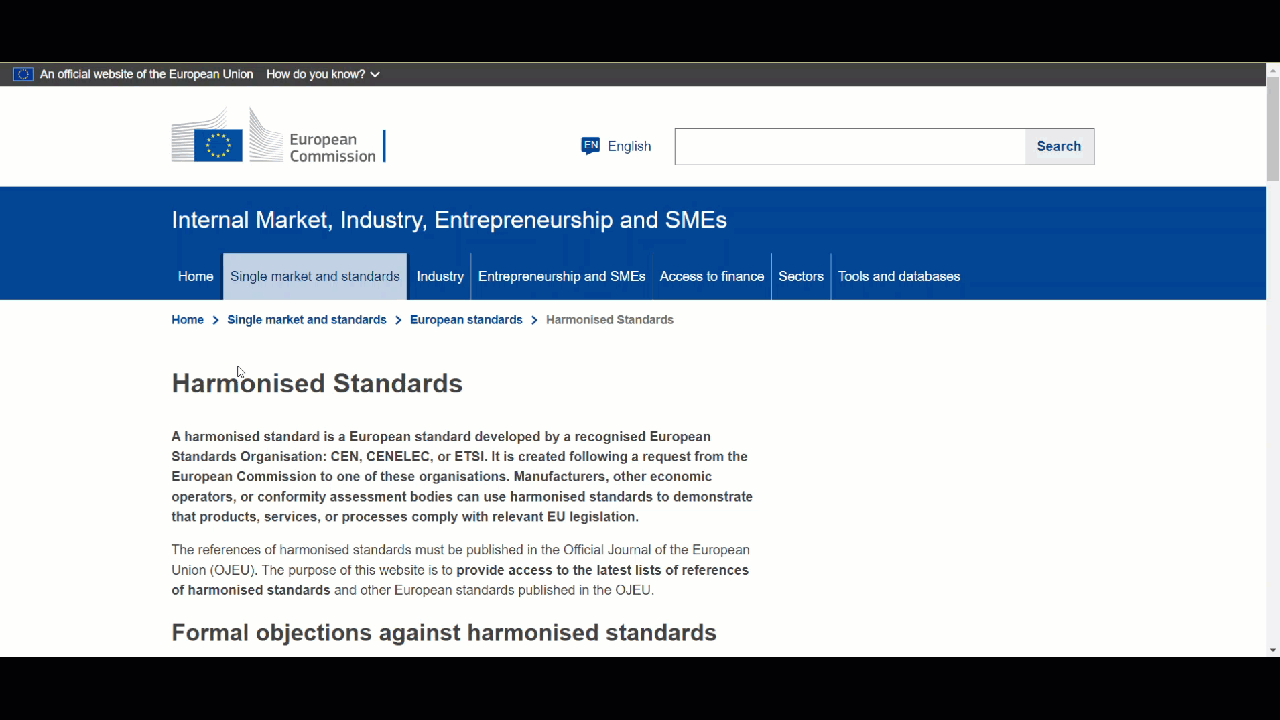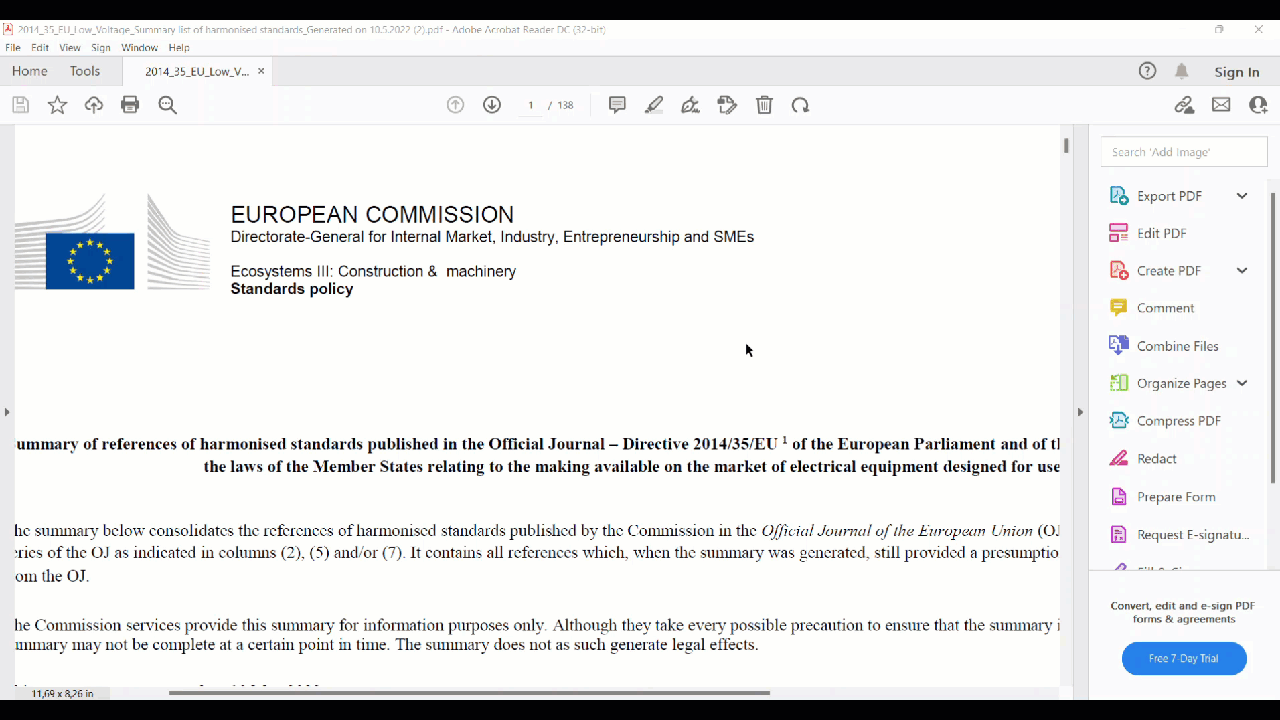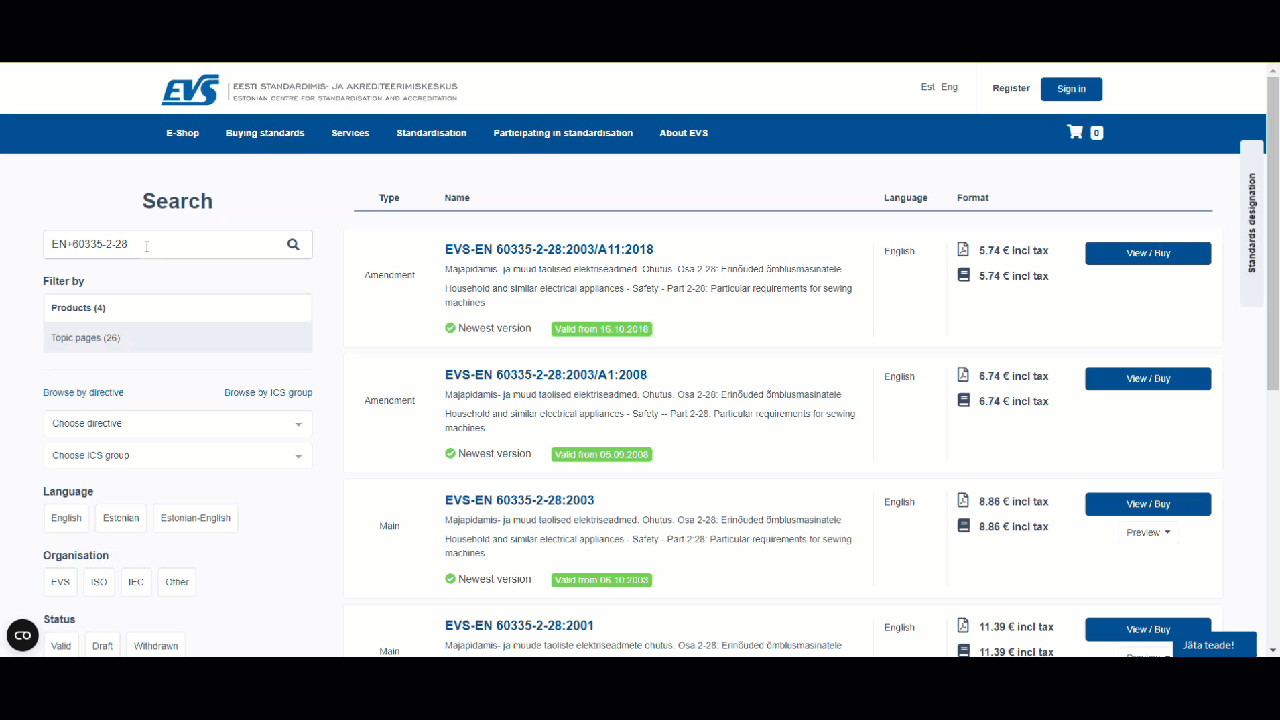How To Determine The Standards That Apply To Your Product
21/2/2023 Law & Legislation
There are about 20,000 standards for all kinds of products, ranging from trampolines to laboratory equipment, and from luminaires to sawing machines. When creating your user manual, it is important that you identify if any vertical standards exist for your product. You may already have done this, as applying the standards also is a crucial part of the product development process. If not, then you still need to do this. As finding standards that apply to your product can be a daunting task, here is some guidance that will help you out.
NOTICE You may find standards that are not a 100% match but closely related to your product. For example, if your product is a floor treatment machine for household use, the standard for vacuum cleaners orfloor treatment machines for commercial use may also contain useful information.
To find standards that apply to your product (EU):
Step 1 - Find harmonised standards
Harmonised Standards are European standards developed by a recognised European Standards Organisation that contain technical specifications with which the essential requirements of the EU directives can be met.
When you use a harmonised standard, you comply with the requirements of the directive under which the standard is harmonised.
- Go to the EC website.
NOTICE The EC regularly updates the url structure of their website. If the URL does not exist any longer, Google “harmonised standards.” Try to find the site of the European Commission, starting with “ec.europe.” Most likely this will be the first result. - Click on each product group that applies to your product. For example, for a battery-powered toy this could be Toy Safety, Electronic compatibility (EMC), and Restriction of the use of certain hazardous substances (RoHS). For a machine this could be Machinery (MD), Radio Equipment (RED), Electromagnetic compatibility (EMC) and Restriction of the use of certain hazardous substances (RoHS).

- Scroll down to the bottom of each product group page, where you find a section called “Summary list of titles and references of harmonised standards.” Open the Summary list as a PDF file.

- Use ctrl + f and search for your specific product. Try several keywords. Scroll through the list manually as well. Sometimes it is hard to find relevant keywords.
- Copy the standard number.

- Go to the website of any European standardisation institute, for example evs.ee. Find the standard of which you just copied the number.
- Select Preview>English. The preview opens.

- Go to the Table of Contents and verify if there is a section covering the instructions. Also, consult the scope of the standard to determine if it is in fact relevant. Many times the title is misleading and you think the standard is relevant, but in fact your product may be excluded.

- If so, purchase the standard. Consult the standard and determine the requirements regarding the instructions. It may be good to check the Annex Zx of the standard to see which EHSR the standard gives presumption to.
Step 2 - Find other standards
Apart from harmonised standards, other standards may exist that give requirements on the user instructions for a specific product.
- Go to the website of any European standardisation institute, for example evs.ee. Use ctrl + f and search for several keywords that describe your product.
- For each standard that you haven’t already found in step 1, select Preview>English. The preview opens.
- Go to the Table of Contents and verify if there is a section covering the instructions.
- If so, purchase the standard. Consult the standard and determine the requirements regarding the instructions.
Step 3 - Research competitors
Another way of finding standards is by verifying which standard competitors use.
- Try to find the declaration of conformity of your competitor’s product.
- Verify which standards are listed in the declaration of conformity of your competitor’s product.
- Use this as inspiration when you perform the steps above. Remember that even if a competitor has decided to use a specific standard, there is no guarantee that this decision is correct.
To find standards that apply to your product (UK):
Designated standards are standards that businesses can use to show their products, services or processes comply with essential requirements of UK legislation.
For the GB market, and depending on the product, a designated standard can be a standard adopted by any of the recognised standardisation bodies (the British Standards Institution (BSI), European Committee for Standardisation (CEN), European Committee for Electrotechnical Standardisation (CENELEC) and European Telecommunications Standards Institute (ETSI)) or by international standardising bodies (including the International Organization for Standardization (ISO), International Electrotechnical Commission (IEC) and International Telecommunication Union (ITU)).
Designated standards are prefixed “BS”, “EN”, “EN ISO” or “EN IEC”. The “EN” prefix indicates that the standard has been adopted by a regional European standardising body.
While the essential legal requirements in GB remain the same as the equivalent EU law, the informative Annex ZA/ZZ and any references to EU law in designated standards should be read as applying to the legislation for GB in the same way, subject to any restrictions or points made in the relevant notice of publication. This will change if and when the essential requirements in GB change.
To find designated standards that apply to your product, a practical approach could be:
- Follow the steps from “To find standards that apply to your product (EU)”. When you are asked to go to the website of a European standardisation institute, go to bsigroup.com.
- Determine if the essential requirements in GB have changed (for example by researching this or this page).
- Consult Annex ZA/ZZ of the found standards to determine if the standard can be used to comply with the essential legal requirements in GB.
- Any changes to GB law and standards to be used to meet (new) essential requirements in GB will be announced via the bsigroup.com website or gov.uk.
To find standards that apply to your product (US):
Product safety in the US is regulated by various federal agencies. Once Congress has enacted a product safety law, the appropriate federal agency (for example, the Consumer Product Safety Commission, the Federal Trade Commission, the National Highway Traffic and Safety Administration, et al.) may create the regulations or rules to implement the law.
To collect the necessary information on the legal requirements applying to your product, first make sure you know which jurisdiction your product is to be marketed and then which federal agency or federal agencies is/are responsible.
When Congress has enacted a law, the federal agencies often develop or use existing standards to implement the law.
- Go to www.usa.gov/laws-and-regulations. Have a look around to learn about some of the best-known U.S. laws and regulations. NOTICE This step is not mandatory to create compliant manuals, but contributes to a better understanding of product safety legislation in the US.
- Identify the competent federal agencies for your product:
- Go to this site of the CPSC. Check the list of Regulated Products to make sure if your product is in CPSC's jurisdiction.
- If not, go to this site of the CPSC and consult the list of Federal Agencies to find out if your product is in another jurisdiction.
- Identify which standards are mandatory for your product.
- Go to the website of the relevant federal agency (for example, www.cpsc.gov)
- Navigate to the page with the overview of mandatory standards (for example this page).
- Click on the link to more information about your product.
- See which standard is mandatory (for example, the toy safety standard, ASTM F963-11).
- Identify which standards are voluntary for your product.
- Go to the website of the relevant federal agency (for example, www.cpsc.gov)
- Navigate to the page with the overview of voluntary standards.
- Click on any relevant link to more information about voluntary standards for your product.
- See which standards are voluntary.
- Acquire the relevant standards(s). Use Ctrl + F and type instructions to find the requirements regarding the instructions.
 |
Ferry Vermeulen is a technical communication expert and director at INSTRKTIV. It's Ferry’s mission to create digital user instructions for all products in the world. Listen to the INSTRKTIV podcast on Spotify or read one of his latest blog articles. Linkedin I Spotify I YouTube I Facebook I Twitter |
